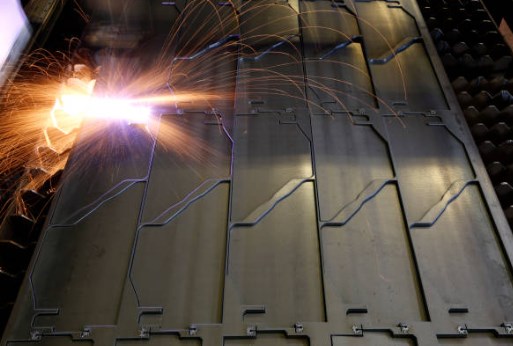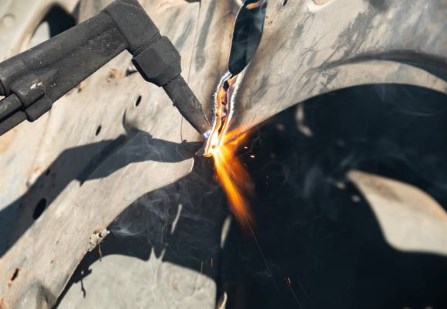Welding thin sheet metal has always presented challenges, primarily the risk of burn-through. Traditional welding methods often generate excessive heat, compromising the integrity of thin materials. However, with the advent of pulsed welding technology, welders can now say goodbye to burn-through issues. This innovative technology offers a solution to one of the most persistent problems in the welding industry. In this article, we explore how pulsed welding technology works and why it's the ideal solution for welding thin sheet metal.

I. What is Burn-Through in Welding?
Burn-through occurs when the welding arc generates too much heat, causing the base metal to melt and create holes. This problem is particularly prevalent when welding thin materials, where maintaining a consistent and controlled heat input is crucial. Burn-through not only weakens the weld but also increases the time and cost associated with rework and repairs.

II. What is Pulsed Welding Technology?
Pulsed welding technology is a modern welding technique that alternates between high and low current pulses. This method allows for precise control over the heat input, reducing the risk of overheating the base material. By carefully managing the arc energy, pulsed welding ensures that the metal is adequately fused without causing burn-through.
III. Key Features of Pulsed Welding Technology
Controlled Heat Input: Pulsed welding delivers controlled bursts of energy, minimizing the overall heat input and reducing the risk of burn-through.
Improved Arc Stability: The alternating current pulses provide a stable arc, leading to higher-quality welds.
Versatility: Suitable for various materials and thicknesses, making it an ideal choice for a wide range of applications.
IV. Benefits of Pulsed Welding for Sheet Metal
Pulsed welding technology brings numerous benefits, especially when working with thin sheet metal. Here are some of the key advantages:
1. Reduced Burn-Through:
The most significant advantage of pulsed welding is the substantial reduction in burn-through incidents. By controlling the heat input precisely, welders can achieve strong, clean welds on thin materials without compromising their structural integrity.
2. Better Weld Quality:
Pulsed welding produces a more stable arc, resulting in smoother and more consistent welds. This technology also minimizes spatter, reducing the need for post-weld cleanup and enhancing the overall appearance of the weld.
3. Increased Productivity:
With fewer instances of burn-through and rework, welders can complete projects more quickly and efficiently. The precise control offered by pulsed welding also means that less time is spent adjusting settings, further boosting productivity.
4. Versatility:
Pulsed welding is suitable for a wide range of materials, including stainless steel, aluminum, and other thin metals. This versatility makes it an excellent choice for various industries, from automotive to aerospace.
5. Energy Efficiency:
By alternating between high and low current pulses, pulsed welding reduces overall energy consumption. This efficiency not only lowers operational costs but also aligns with sustainable manufacturing practices.
V. Applications of Pulsed Welding Technology
Pulsed welding technology is particularly beneficial in industries where precision and material integrity are paramount. Some of the key applications include:

1. Automotive Industry:
In the automotive sector, where lightweight materials are increasingly used, pulsed welding ensures strong and reliable joints without adding unnecessary weight. It is ideal for welding car body panels, exhaust systems, and other components made from thin sheet metal.
2. Aerospace Industry:
The aerospace industry demands high precision and reliability. Pulsed welding meets these requirements by providing high-quality welds on thin, lightweight materials, essential for aircraft construction and repair.
3. Manufacturing and Fabrication:
In general manufacturing and fabrication, pulsed welding allows for efficient and high-quality production of metal products. Its ability to handle various materials and thicknesses makes it a versatile tool in any fabrication shop.
VI. Conclusion
Pulsed welding technology represents a significant advancement in the welding industry, offering a solution to the long-standing problem of burn-through in thin sheet metal. By providing precise control over heat input, improving weld quality, and enhancing productivity, pulsed welding is revolutionizing how we approach welding tasks.
For welders and manufacturers seeking to improve their welding processes, investing in pulsed welding technology is a smart move. At Megmeet Welding Technology, we are committed to bringing you the latest innovations in welding solutions. Explore our range of advanced welding equipment and discover how pulsed welding can transform your operations. Say goodbye to burn-through and hello to superior welds with pulsed welding technology.
Related articles:
1. Pulse Welder: A New Technology for High-Quality Welding
2. MIG, Pulsed MIG, and Double Pulsed MIG Explained.
3. Pulsed TIG Welding — Weld Thin Like a Pro
4. Pulsed vs. CW Laser Welding: Key Differences | Expert Insights
5. Guide to Pulsed MIG Welding in Manufacturing






